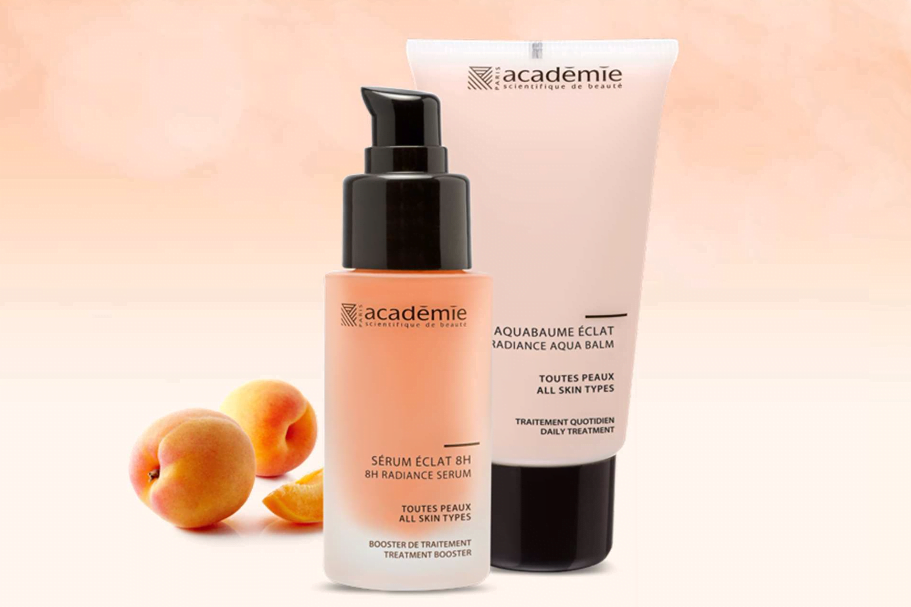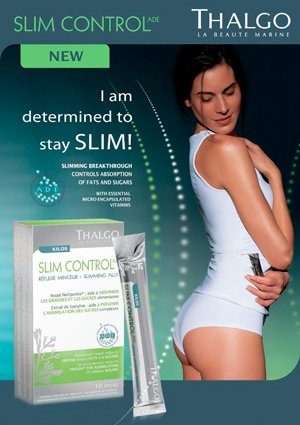By Liz Finlay
Find out how to determine which exfoliator is right for your skin. Plus, learn the dos and don’ts of exfoliating.
Finding the right exfoliator
There are two general classes of exfoliators: mechanical and chemical. Mechanical exfoliation products remove dead skin cells by physically abrading them with either a cleansing cloth or a scrub containing sand, salt or synthetic beads. Chemical exfoliators contain alpha hydroxy acids (AHAs), such as glycolic and salicylic acid, beta hydroxy acids or retinoic acid (retinol).
Most dermatologists prefer chemical agents because they penetrate deeper and have the added benefit of stimulating cell renewal and collagen synthesis. The result? Increased radiance. But chemical exfoliators are not for everyone. Those with sensitive skin (and those with rosacea) may find this class of products too harsh. Similarly, if you have dry skin, chemical polishers may be more exfoliation than your skin can handle.
Most skin types benefit from a gentle to moderate mechanical scrub. Whether your skin is oily, combination, acne-prone or slightly dry, it’s a matter of tuning into the right frequency.
Red alert
After using your exfoliating product, your skin should be a pleasant pink and have a slight tingling sensation. If skin is red, peeling, burning or painful, you’re being overzealous and should reduce the frequency of treatments or consider a gentler product.
How often should I exfoliate?
Twice daily – that’s the aim, according to Kellett and Dr. David Orentreich, a dermatologist at Clinique. “It’s better to exfoliate twice a day using mild or moderate exfoliation than to exfoliate once a week with an extremely harsh process,” says Orentreich. “Exfoliation is comparable to exercise; it’s better to follow a moderate program regularly than to overdo it randomly.”
If you are new to exfoliation or have sensitive skin or an inflammatory condition (acne or rosacea), your skin may need some training before launching into daily exfoliation. Start using an exfoliating product every other day and work up from there, says Kellett. Once the skin has grown accustomed to regular exfoliating, you may want to increase the weight of your regimen.
Exfoliating masks and peels designed for occasional use typically rely on AHAs (including salicylic and lactic acids), while at-home microdermabrasion kits use a combination of mechanical scrub and chemical peel to strip the skin of dead cells with more rigour than a daily product might for that extra boost of radiance.
Exfoiating dos and don’ts
DON’T exfoliate before you cleanse; doing so will remove makeup and dirt but not the dead skin cells responsible for pore blockage and dull tone.
DO use an exfoliating cleanser, one that gently cleans away dirt and debris while simultaneously sloughing dead skin cells.
DON’T press hard; when using granular scrubs or exfoliating cloths, mild pressure is all that’s required. “You want to let the product do the work,” says Kellett.
DON’T double-dip. “If you’re using a loofah, don’t also use an exfoliating gel or cleanser,” warns Kellett. “That’s overdoing it.” Similarly, if you use a cleansing scrub, don’t follow it with a glycolic-acid-, retinol- or AHA-based moisturizer unless under the direction of a dermatologist.
DO hydrate your skin immediately after exfoliation. Moisturizers are most effective after dead surface cells have been whisked away.
DO wear sunscreen, particularly after exfoliating, a process that removes a protective layer of skin. “I tell all my patients to wear SPF 30 every day,” says Kellett.
What Is Exfoliation?
Exfoliation Is Part of Good Skin Care, But Don’t Overdo It.
By Anitra Brown <http://spas.about.com/bio/Anitra-Brown-10513.htm>, About.com Guide
Exfoliation is the removal of the oldest dead skin cells that cling to the skin’s outermost surface, or epidermis. Exfoliation is an important part of both facials and body treatments. When done correctly, exfoliation leaves the skin feeling smoother and fresher looking. Exfoliation also makes it easier for expensive facial products like serums to pentrate.
There are two forms of exfoliation:
- Mechanical Exfoliation. The dead skin cells are physically rubbed off with an abrasive. Examples of mechanical exfoliation include a salt glow, a body scrub that might use sugar or coffee grounds, or skin brushing. On the face, scrubs should use small, round, gentle abrasives like jojoba beads. Stay away from something harsh like apricot scrubs, which can cause micro-tears in your skin. A more aggressive and effective approach to mechanical exfoliation is microdermabrasion, which comes in two types – crystal and crystal-free, or diamond-tip.
- Chemical Exfoliation. Enzymes, alphahydroxy acids (AHAs) or betahydroxy acids (BHAS) loosen the glue-like substance that holds the cells together, allowing them to slough away. Facial peels are a form of chemical exfoliation. Chemical peels can either be very gentle or very aggressive, depending on how the strong the peel is. Body treatments might use mild chemical exfoliants like pineapple enzymes.
Why Is Exfoliation Important?
The skin is constantly generating new skin cells at the lower layer (the dermis) and sending them to the surface (the epidermis). As the cells rise to the surface they gradually die and become filled with keratin. These keratinized skin cells are essential because they give our skin its protective quality. But they are constantly sloughing off to make way for younger cells.
As we age the process of cell turnover slows down. Cells start to pile up unevenly on the skin’s surface, giving it a dry, rough, dull appearance. Exfoliation is beneficial because it removes those cells that are clinging on, revealing the fresher, younger skin cells below.
It is possible, however, to overexfoliate, especially on the delicate skin of the face. Overexfoliating will dry and irritate the skin.
What You Should Know About Facial Exfoliation:
- Be extra careful with the delicate skin of your face.
- It’s easy to overexfoliate. Talk to a good esthetician about the product and frequency that is best for your skin. Your should be especially cautious if you have sensitive or aging skin.
- Be careful not to overdo microdermabrasion. It can make thin, aging skin even thinner if you get too many treatments too quickly.
- Don’t overexfoliate, especially in summer or in very sunny climates. You’re making it easier for your skin to be damaged by the sun.
- Never use body scrubs on the face. They’re too rough.
- Be very careful with peels. Don’t get one peel and then go somewhere else to ask for another. You can remove too much of your protective layer and end up exposing the living dermis. Again, be careful about going out in the sun afterwards, or doing it in summer.
- Never wax if you’ve had a peel recently. It might expose raw, living skin, which will have to scab over to heal.
What You Should Know About Body Exfoliation:
- You can use a body scrub once or twice a week with no problem.
- Body brushing every morning is a gentle way to exfoliate — and wake up!
Exfoliation Basics
Exfoliation Tips for Acne Prone Skin
ByAnyone interested in acne skin care will have heard the term exfoliation. What exactly is exfoliation? Why is it so important for those with acne?
Exfoliation is the removal of dead skin cells. An exfoliant is a product or procedure that reduces the amount of dead cell build-up on the skin. Whether your acne is mild or more severe, regular exfoliation will smooth and soften the skin, brighten the complexion, and lessen breakout activity.
But before you run out and buy a scrub, take the time to learn about all the exfoliating products and treatments available. Making the right exfoliant choice is essential to getting the results you are looking for.
Skin’s Natural Exfoliation
The skin naturally sheds dead skin cells through a process called desquamation. Every 28 days, on average, a new skin cell is “born” in the stratum germinativum, the deepest layer of the epidermis. The cell travels up through the epidermis until it reaches the uppermost layer of the skin, the stratum corneum. Once the cell reaches this layer, it is essentially dead. Ideally, new skin cells arrive at the skin’s surface, pushing older cells off.
Where do the old skin cells go once they have been sloughed away? They settle on your furniture, in the form of dust. Yes, that’s right. Most of the dust in your home is not dirt, but rather dead skin cells.
Acne and Dead Skin Cells
In those with acne, the natural desquamation process goes awry. Acne-prone skin produces more dead skin cells than is typical, and these cells aren’t properly shed. This condition, called retention hyperkeratosis, is the reason regular exfoliation is so important for acne prone skin types.
In normal functioning skin, excess dead skin cells are constantly being sloughed away naturally. In acne-prone skin, dead cells remain stuck on the skin’s surface and within the follicle, creating a clog (impaction). This plug of cellular debris and excess oil forms a blackhead or, if bacteria invade, an inflamed blemish.
Because of the inability of acne-prone skin to naturally shed dead skin cells, an outside means of exfoliation is necessary to help the process along. Regular use of an exfoliant can inhibit the formation of blackheads and blemishes by keeping the follicles free of blockages.
Physical Exfoliants
There are literally hundreds of exfoliating products and procedures available today, but all are found in one of two forms: physical or chemical.
Physical exfoliants work by manually removing dead skin cells with the help of an abrasive ingredient or implement. Physical exfoliants may be as simple as an over-the-counter scrub, or as involved as a professional procedure, such as microdermabrasion.
Physical exfoliants leave your skin feeling soft and smooth, but they may not be the best choice for acne-prone skin. The friction involved in using a physical exfoliant can irritate already inflamed skin, exacerbating redness and promoting additional breakouts. Those with acne, especially inflamed acne, should avoid physical exfoliants altogether, unless otherwise advised by a doctor.
Examples of physical exfoliants include:
- Scrubs
- Abrasive pads and cloths
- Microdermabrasion
Chemical Exfoliants
Some of the most popular exfoliating treatments use chemical exfoliants. Chemical exfoliants dissolve or loosen the bonds that hold dead cells on the skin’s surface by means of an acid or enzyme. Abrasive agents are not needed. Exfoliating acids and enzymes can be incorporated into lotions, gels, masks, toners, and more.
Chemical exfoliants can be found over-the-counter at your local retail store, and many are gentle enough to be used daily. Stronger daily and weekly treatments, as well as light chemical peels, are available at day spas and skin spas. The estheticians working at these establishments can help you decide which treatments will be best for your skin. For the most powerful chemical exfoliant products, ask your dermatologist. He or she can provide you with a prescription treatment, or perform stronger chemical peels, if needed.
Most chemical exfoliants, whether over-the-counter or doctor prescribed, will dry the skin to some degree. Incorporating an oil-free moisturizer into your daily skin care routine will help ward off excessive dryness, peeling, and irritation.
Some common chemical exfoliants include:
- Alpha hydroxy acids (AHA)- glycolic, lactic, and tartaric acid
- Beta hydroxy acids (BHA) – salicylic acid
- Retinoids – Retin A (tretinoin), Differin (adapalene), Tazorac (tazarotene)
- Chemical peels – trichloroacetic acid (TCA), carbolic or phenol, AHA and BHA peels
Exfoliant Safety Tips
- If you need help choosing an exfoliant, don’t hesitate to ask your dermatologist or aesthetician for guidance. They will be able to recommend a product or procedure that is both safe and effective for your skin.
- Unless recommended by your doctor, avoid using several exfoliating products at the same time. Doing so may cause redness, excessive dryness, peeling, and considerable irritation.
- If you are currently using any acne medications, especially Accutane <http://acne.about.com/od/acnetreatments/a/isotretinoin.htm> (isotretinoin), retinoids such as Retin A (tretinoin) or Differin (adapalene), or any other topical or oral medications, talk with your doctor before beginning any exfoliation treatment.
- If a product causes considerable irritation or discomfort, discontinue use and consult your doctor.













































 Today cosmetics are widely used and readily available in a staggering wealth of colours, brands and options. There are colours to complement every skin tone, specific outfits, and even makeup for daytime looks vs nighttime wear. Makeup no longer contains ingredients like arsenic or lead, which we recognize would be detrimental to our health. We use makeup to cover blemishes, even skin tone, and highlight the parts of our faces that we love. Makeup is a way to add a little dazzle to your everyday look.
Today cosmetics are widely used and readily available in a staggering wealth of colours, brands and options. There are colours to complement every skin tone, specific outfits, and even makeup for daytime looks vs nighttime wear. Makeup no longer contains ingredients like arsenic or lead, which we recognize would be detrimental to our health. We use makeup to cover blemishes, even skin tone, and highlight the parts of our faces that we love. Makeup is a way to add a little dazzle to your everyday look.




















































